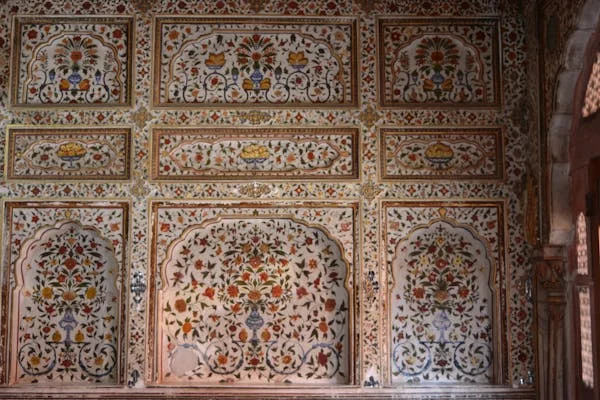Introduction
Gel Ooru is a traditional art form that has been an essential part of Indian heritage for centuries. Originating in Karnataka, this artistic practice reflects creativity, culture, and craftsmanship. It is not just an art form but a deep-rooted cultural tradition that showcases the rich history of Indian artisans.
Historically, artisans used natural materials such as clay, earth, and plant-based pigments to create intricate designs. The process of making Gel Ooru involves detailed craftsmanship and dedication, ensuring that each piece is unique. From religious ceremonies to modern art exhibitions, Gel Ooru continues to inspire artists and audiences alike. As time passes, the popularity of Gel Ooru is expanding beyond its traditional boundaries. Today, this art form is used in home décor, fashion accessories, and contemporary art. The combination of cultural significance and modern adaptation makes it a timeless artistic expression.
This article explores the history, materials, techniques, modern applications, benefits, and challenges of Gel Ooru while emphasizing its importance in today’s world.
History and Origin of Gel Ooru
Gel Ooru has been practiced for centuries, mainly in Karnataka. The name itself originates from local dialects, symbolizing the artistic and cultural depth of this tradition. Initially, artisans created these works during temple festivals and community celebrations. Religious significance played a vital role in the evolution of Gel Ooru. Many designs depicted gods, goddesses, and mythological stories, making them an integral part of rituals and ceremonies. The artwork was often created to honor deities and bring good fortune to households.
Over time, the practice spread across different regions, adapting to various styles and influences. While its traditional roots remain strong, modern artists have found innovative ways to incorporate it into contemporary artistic expressions. Today, many artisans receive recognition for their work in national and international art exhibitions. The ability of Gel Ooru to evolve while maintaining its core identity has contributed to its longevity. With the right promotion and awareness, this ancient art form will continue to thrive for generations.
Materials Used in Gel Ooru Art
Traditional it art relies on natural and sustainable materials, making it an eco-friendly craft. The following materials play a crucial role in creating these masterpieces:
1. Base Materials
- Artisans primarily use clay and earth to form a gel-like medium.
- The texture and consistency of the base material determine the final appearance of the artwork.
2. Natural Pigments
- Plant extracts, minerals, and flowers provide vibrant and long-lasting colors.
- Artists carefully select pigments to maintain authenticity and visual appeal.
3. Decorative Elements
- Seeds, dried flowers, and small stones add depth and uniqueness to each piece.
- Metallic powders enhance the artwork, giving it a distinct shine.
These natural materials ensure that it remains environmentally friendly while preserving its authenticity.
Techniques for Creating Gel Ooru Art
The process of creating it requires skill, patience, and precision. Artisans follow a structured approach to bring their designs to life.
1. Design Planning
Artists begin by sketching the desired pattern on the base material. This stage requires creativity and a strong understanding of symmetry and aesthetics. Since many Gel Ooru designs feature religious or cultural motifs, planning is crucial to achieving the intended message or theme.
2. Gel Preparation
To create the perfect gel-like consistency, artisans mix natural pigments with clay and earth. This mixture serves as the foundation of the artwork. Ensuring the right texture is important, as it affects how the final design will look.
3. Application Process
Using fine brushes or spatulas, artists carefully apply the gel mixture to the base. They build layers to create depth and dimension, ensuring a visually striking effect. The precision of the application process determines the intricacy of the final artwork.
4. Decoration and Detailing
Once the base design is complete, artisans add decorative elements such as stones, dried flowers, and metallic powders. This step enhances the overall aesthetic appeal, making the artwork more dynamic.
5. Drying and Preservation
After completing the design, the artwork is left to dry naturally. Some artisans apply a protective sealant to ensure the longevity of the piece. This final step prevents fading and damage, allowing the artwork to be preserved for years.
Each step in the process contributes to the uniqueness and beauty of it. The combination of traditional techniques and modern influences has kept this art form relevant in today’s artistic landscape.
Modern Applications of Gel Ooru
While it has traditionally been used in religious and cultural contexts, it has found new applications in contemporary society.
1. Interior Decoration
Homeowners and interior designers use Gel Ooru art to add a touch of tradition to modern living spaces. Wall hangings, decorative panels, and handcrafted designs enhance the aesthetic appeal of homes and commercial spaces.
2. Fashion and Accessories
The fashion industry has embraced Gel Ooru elements in clothing, jewelry, and accessories. The intricate designs and natural pigments make them stand out as unique fashion statements.
3. Artistic Showcases and Exhibitions
Art galleries and museums display Gel Ooru to highlight its cultural significance. Many artists receive recognition for their work through national and international exhibitions.
4. Digital and Commercial Adaptations
With advancements in technology, digital Gel Ooru designs have gained popularity. Graphic designers and illustrators incorporate these traditional patterns into digital artwork, packaging, and branding.
These applications demonstrate the versatility of Gel Ooru and its ability to adapt to changing artistic trends.
Benefits of Gel Ooru Art
It offers numerous benefits, making it a valuable artistic tradition in modern times.
1. Cultural Preservation
By practicing and promoting it, artisans contribute to the preservation of Indian heritage. The art form serves as a bridge between generations, passing down traditional knowledge and skills.
2. Environmental Sustainability
The use of natural materials ensures that it remains eco-friendly. Unlike synthetic paints and chemicals, natural pigments do not harm the environment.
3. Economic Opportunities
Artisans benefit from selling their creations at fairs, exhibitions, and online platforms. Government initiatives and NGOs also support local artisans by providing funding and resources.
4. Therapeutic and Mental Health Benefits
Engaging in artistic activities like it promotes relaxation and mindfulness. Many artists find joy and peace in the creative process, reducing stress and anxiety.
These benefits highlight the importance of sustaining and promoting Gel Ooru in today’s world.
Challenges in Preserving Gel Ooru
Despite its cultural significance, it faces challenges that threaten its survival.
1. Lack of Awareness
Many people remain unaware of Gel Ooru and its artistic value. Cultural programs and educational initiatives can help increase public interest and appreciation.
2. Decline in Artisan Communities
Younger generations often pursue modern careers, leading to a decline in traditional art forms. Incentives, grants, and training programs can encourage more individuals to take up Gel Ooru as a profession.
3. Competition from Mass-Produced Art
Machine-made and digital art have overshadowed traditional handcrafted works. Promoting the authenticity and craftsmanship of Gel Ooru can help maintain its relevance.
Addressing these challenges requires a collective effort from artists, cultural organizations, and government institutions.
Conclusion
It is more than an art form—it is a symbol of cultural heritage, creativity, and craftsmanship. Passed down through generations, it continues to inspire artisans and art lovers alike.
The combination of traditional techniques, natural materials, and intricate designs makes Gel Ooru a unique and valuable practice. By integrating it into modern applications, supporting artisans, and raising awareness, we can ensure that this tradition thrives in the future.
Whether as an artist, collector, or enthusiast, everyone can contribute to preserving and promoting Gel Ooru. Attending workshops, purchasing authentic handmade pieces, and educating others about this beautiful art form can make a significant difference.
Through collective efforts, Gel Ooru can remain a cherished part of India’s artistic and cultural landscape for generations to come.





